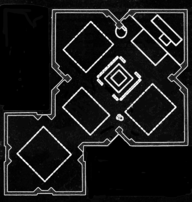Johan Otto von Spreckelsen


Johan Otto von Spreckelsen (4 May 1929 — 16 March 1987) was a Danish architect, best known for designing the Grande Arche of La Défense in Puteaux, near Paris. He directed the creation of several modern churches in Denmark.[1][2]
Life
He was born in Viborg and studied at the Viborg Katedralskole and Royal Academy of Arts in Copenhagen. He later became associate professor at the Academy and from 1978 he was professor at the Academy of Fine Arts, School of Architecture. He later served as director up to the time of his death.[3][4]
Churches
He directed the creation of several modern churches in Denmark: Vangede Kirke near Copenhagen (1974), Stavnsholt Kirke at the city of Farum (1981) and two Roman Catholic churches including one in Esbjerg (1969), St Nikolaj Church, and Hvidovre (1960), also consecrated to Saint Nicholas.[5]
He was modest about his accomplishments. Once in an interview, he declared that he was an architect who built three churches and a house.[6] He relied heavily on simple geometrical figures, especially the quadrant, which can be seen in his churches, in the interior decorations even of church organs.[7]
La Défense
His design won the international competition of the Grande Arche in Puteaux, France, as the French President François Mitterrand felt it was the best because of its 'purity and strength'. This work of 110 meters of height, which was inaugurated in 1989, two years after his death, used with remarkable ability the technology of its time, and was inspired by the nearby Arc de Triomphe. The monument, located in the heart of the financial district of La Défense, is built of granite and of Carrara marble. From its terrace, it is possible to admire a panoramic view all along the Axe historique with the Arc de Triomphe, the Champs-Élysées, the Luxor Obelisk at the Place de la Concorde and the gardens of the Tuileries and the Louvre beyond.[8][9]
Personal life
In 1955, he was married to Karen Gerda Gustavsen. Johan Otto von Spreckelsen died in Hørsholm and was buried at Hørsholm Kirkegård.
Gallery
-
Vangede Kirke
-
Stavnsholt Kirke
-
Vangede plan
References
- ^ "Johan von Spreckelsen, Danish Architect". The New York Times. March 21, 1987. Retrieved May 1, 2019.
- ^ "Johan Otto von Spreckelsen: l'Arche de la Défense". Architektur DK, 1990, n. 1-2, v. 34. Retrieved June 1, 2019.
- ^ "Johan Otto von Spreckelsen". ecured.cu. Retrieved May 1, 2019.
- ^ Rita Engbirk. "Johan Otto von Spreckelsen". Den Store Danske, Gyldendal. Retrieved May 1, 2019.
- ^ Lilli Lehmann. "Johan Otto von Spreckelsen". Kunstindeks Danmark & Weilbach Kunstnerleksikon. Retrieved June 1, 2019.
- ^ Fitoussi, Brigitte; Fortes, Imogen (2017). Paris in Fifty Design Icons. Hachette UK. p. 66. ISBN 9781840917567. Retrieved November 20, 2020.
- ^ "Johan Otto von Spreckelsen (1929—1987)". Oxford University Press. Retrieved May 1, 2019.
- ^ "Designer of La Defense Complex outside Paris". Associated Press. March 19, 1987. Retrieved May 1, 2019.
- ^ "The Grande Arche, a doorway between heaven and earth". lagrandearche.fr. Retrieved May 1, 2019.
Other Sources
- Torben Weirup (ed.) (2003) Det Åbne Vindue, et essay om arkitekten Johan Otto von Spreckelsen (Charlottenlund: Luga) ISBN 87-985316-3-8




